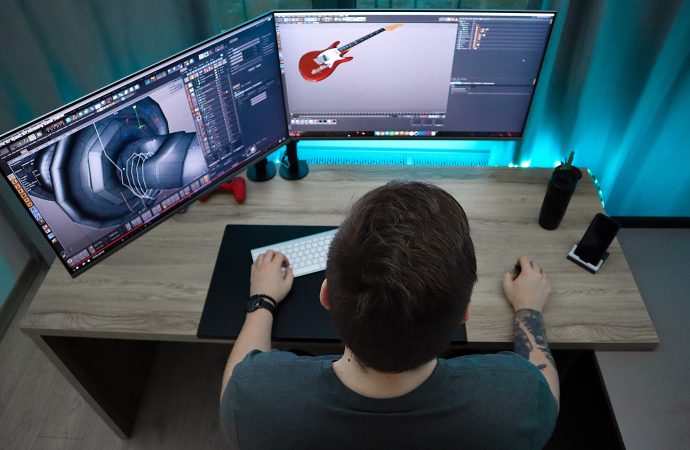Lights, camera…sound! While animation and VFX may be visually stunning, it’s the sound design that truly brings them to life. From the early days of Mickey Mouse cartoons to modern-day blockbusters like The Avengers, sound designers have been an integral part of creating a fully immersive experience for audiences. In this blog post, we’ll dive
Lights, camera…sound! While animation and VFX may be visually stunning, it’s the sound design that truly brings them to life. From the early days of Mickey Mouse cartoons to modern-day blockbusters like The Avengers, sound designers have been an integral part of creating a fully immersive experience for audiences. In this blog post, we’ll dive into the importance of sound design in animation and VFX. Get ready to discover how sound effects, music, and dialogue can make or break a scene!
The history of sound design in animation and VFX
Sound design in animation and VFX has come a long way since the early days of silent cartoons. Back then, sound effects were created live on set using objects like coconut shells or bicycle horns. In 1928, Walt Disney revolutionized the industry with Steamboat Willie – the first animated film to synchronize sound and image.
As technology advanced, so did sound design. The introduction of magnetic tape in the 1940s allowed for greater flexibility in editing and adding multiple layers of audio. In the 1980s, digital audio workstations made it possible for sound designers to create complex sounds using synthesizers and other electronic instruments.
Today’s sound designers have access to an endless array of tools and software that allow them to craft immersive sonic landscapes. From Foley artists who recreate everyday sounds like footsteps or rustling clothes, to composers who create sweeping orchestral scores – every aspect of sound is carefully crafted to enhance the story being told on screen.
Despite all these advancements, one thing remains constant: Sound design is crucial in creating believable worlds that audiences can get lost in. Without it, animations would feel flat and lifeless – no matter how visually stunning they may be!
The different types of animation and VFX
Animation and VFX can take on many different forms, each with its unique style and techniques. In traditional animation, hand-drawn frames are used to create the illusion of movement. This technique has been around since the early days of animation and is still commonly used today.
Stop-motion animation involves taking photographs of a physical object or scene in small increments while making minor adjustments between shots, creating the illusion of movement when played back at normal speed. Claymation is an excellent example of stop-motion animation.
Computer-generated imagery (CGI) uses 3D modeling software to create realistic-looking objects that move according to pre-programmed actions or physics simulations. This technique is often used in movies where it would be impossible or too dangerous to film real-life scenarios.
Visual effects (VFX), on the other hand, involve adding digital elements into live-action footage captured on a camera. These elements include anything from simple text overlays to complex environments that could not exist in reality.
There are numerous types of animations and visual effects available for use today, each with its unique set of challenges and rewards for sound design professionals.
The role of sound design in animation and VFX
The role of sound design in animation and VFX cannot be overstated. In fact, it is an integral part of the process that brings these mediums to life. Sound designers work closely with animators and VFX artists to create a soundscape that complements the visuals.
One important aspect of sound design in animation is creating unique sounds for characters and environments. For example, if there’s a scene set in a forest, the sound designer might add subtle bird calls or rustling leaves to make it more immersive.
Sound also plays a critical role in conveying emotions and moods. The right music or sound effect can instantly change the tone of a scene from lighthearted to suspenseful or even terrifying.
Another key aspect of sound design is ensuring everything syncs up perfectly with the visuals. This includes matching dialogue to lip movements and making sure all sounds are timed correctly for maximum impact.
In summary, without proper attention paid to sound design, animations and VFX would feel incomplete and lacking depth. It truly is one of those things that you don’t notice until it’s done poorly!
Conclusion
To sum it up, sound design plays an essential role in animation and VFX. It brings life to characters, provides context to the environment, and enhances the overall viewing experience of your audience.
Throughout history, we have seen how sound design has evolved from basic sound effects to complex audio techniques that simulate real-life situations. Different types of animation require different approaches to sound design, but all animations benefit from a well-executed plan.
When done correctly, using appropriate sounds can make a significant difference in delivering your message effectively. As such, it is crucial for animators and VFX artists alike to understand the significance of incorporating excellent audio into their projects.
As technology continues to advance further than ever before every day; there are more opportunities for innovative ways of incorporating great sounds into our animated works. In conclusion? Sound design has always been important in animation and VFX—now more than ever before!

















Leave a Comment
Your email address will not be published. Required fields are marked with *